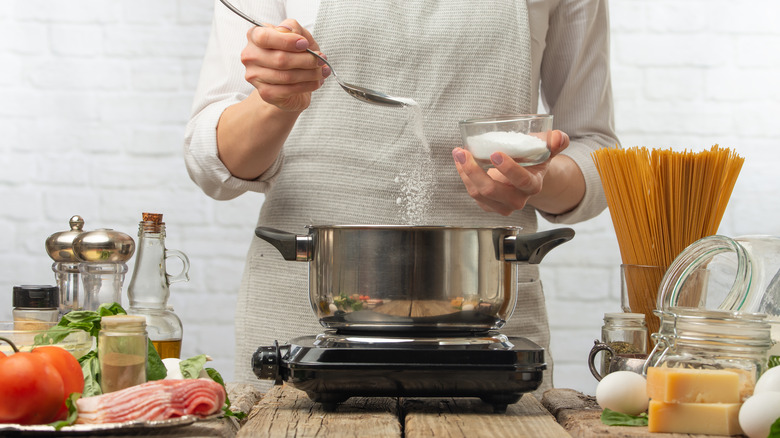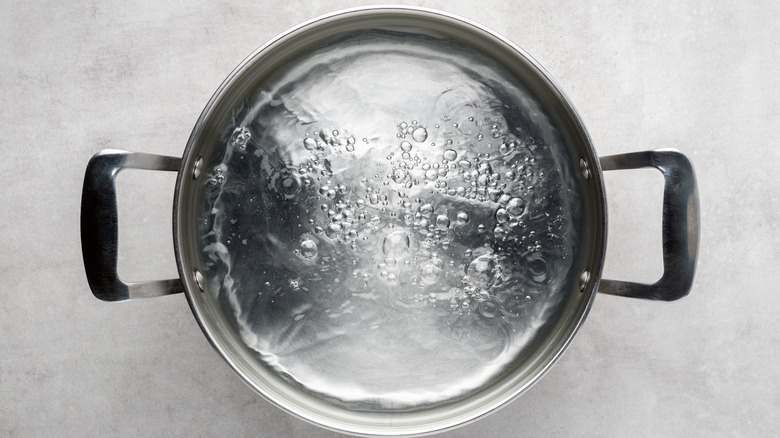Your Pasta Water Needs Way More Salt Than You Thought
While boiling pasta might seem like just about the easiest thing you can do in the kitchen, the hard truth is that getting it just right can actually be more challenging than you think. For instance, how much should you be seasoning that boiling water before the pasta hits its depths? It sometimes seems as if everyone has heard that they should salt their pasta water to be as salty as the ocean, but what does that actually mean? The truth is, it is entirely possible to put way too much salt into your pasta and make it very nearly inedible (via Serious Eats), but it is also important to make sure you're adding enough. And "enough" is probably more than you would think.
According to Food52, adding the correct amount of salt to the pasta water is your one shot at seasoning or flavoring the pasta itself. Without enough salt, the dish will taste bland no matter what kind of sauce you add on top of the noodles. So, with these two extremes in mind, many people find themselves wondering just how much salt is the right amount to get perfectly seasoned pasta. Fortunately, quite a few folks have tested a variety of measurements to find just the right answer.
The right amount of salt you should add to pasta water
While Serious Eats tested a number of salt measurements for the perfect pasta water, Food52 took advice from an expert: the author of "The Essentials of Classic Italian Cooking," Marcella Hazan. "For every pound of pasta, put in no less than one and one-half tablespoons of salt, more if the sauce is very mild and under-salted," Hazan explained. As for when you should add the salt, Hazan recommended waiting until the water was boiling.
Serious Eats came to a different conclusion, based on the amount of water in the mix rather than the weight of the pasta. It comes down to your preference, with an average amount of 1 ½ teaspoons of table salt per liter of water. You can always add more if you like a saltier flavor, though. As for whether or not you should go with one technique over another, we lean towards a bit of experimentation. Try out the two methods to find out which one best suits your own personal preference.

